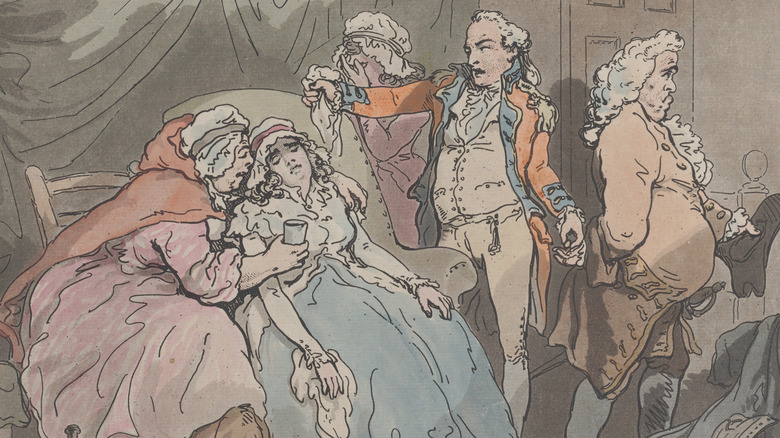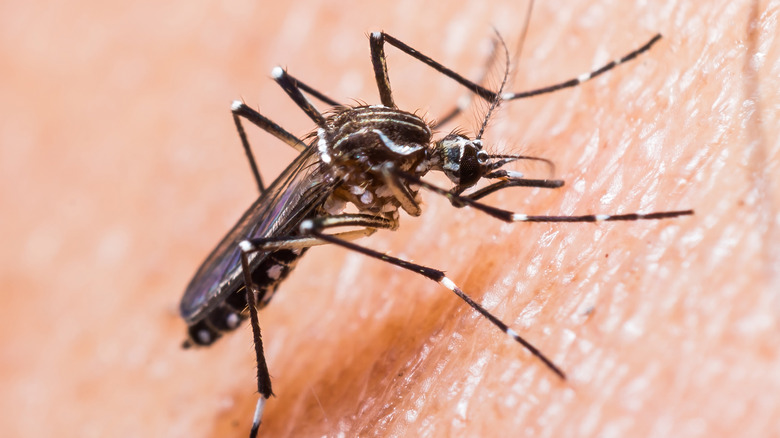What You Didn't Know About Philadelphia's 1793 Yellow Fever Outbreak
Around the year 1668, a disease was introduced to the United States by way of New York City (via Jefferson Digital Commons) that was causing fever, severe liver disease, and yellowing of the skin. Patients vomited blood; the disease was fatal. A dangerous virus, yellow fever, had hit the shores of the United States, by way of the Caribbean. According to The Encyclopedia of Greater Philadelphia, yellow fever originated in Africa, making its way to the Caribbean by way of enslaved people carrying the virus on ships.
Over the next 100 years, outbreaks of yellow fever popped up all over the United States. And while it wouldn't be until 1905 that it was discovered that it was mosquitoes carrying yellow fever (via JAMA Network), the world still had to deal with the effects of the disease on the population.
According to The Encyclopedia of Greater Philadelphia, outbreaks occurred throughout the U.S. in the years of 1741, 1747 and 1762. Over the second half of 1762, yellow fever broke out in Philadelphia (via Varsity Tutor) but, by 1763 the virus was again under control and over the next several years, appeared that yellow fever had been conquered. That is, until 1793.
A century of outbreaks
For nearly three decades, yellow fever had been contained. But a "perfect storm" of events caused one of the worst pandemics of all time.
For one, Philadelphia was serving as the young nation's capital. People the world over were regularly visiting the city, bringing along with them any number of diseases. The influx of travelers was coupled with the fact that the summer of 1793 was one of the hottest on record, so bad that the American Society of Microbiology described the city like this: "A blanket of humidity covered the city, fed by putrid swamps that served as breeding grounds for the Aedes aegypti mosquito."
Added to that tinderbox was a boat of refugees trying to escape a yellow fever outbreak in the Caribbean. They docked in Philadelphia (via History), and the final result is a 10% decrease in the population in the city in a matter of months (via History of Vaccines).
The mosquitos were more than just annoying
As events began to unfold, people living and working in the city almost immediately began displaying symptoms of yellow fever. People were reportedly "turning yellow then vomiting and bleeding every way" (via History). On October 11, 1793, 100 people had been reported dead as a result of the virus. Within weeks that number would change to 100 people dying of yellow fever per day. According to History, the situation got so bad for the city that the local government couldn't function any longer.
Restrictions were instituted, but the virus still ran unchecked. Parts of the city were evacuated, people were quarantined. Those who stayed covered their faces with cloth (via Washington Post), yet the virus persisted. It wasn't until a cold front late in October whipped through the city, killing all the mosquitos, that the death toll began to drop. By October 26, 1793, the death toll dropped to 20 deaths per day (via History). By the time the pandemic had petered out, 5,000 people had lost their lives to yellow fever.


